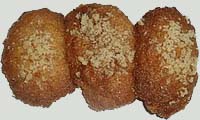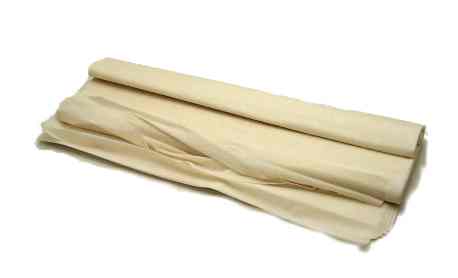Filberts |
 | Filberts are cultivated hazelnuts. |
Fides |
| Very fine noodles used in Middle Eastern pilafs. Vermicelli is too thick to use as a substitute. Fides is the Greek word; Shehrieh is the Syrian for this noodle. |
Flan al Caramelo |
| Baked individual custards with caramelized sugar. |
Foofoo |
| A mashed yam, corn, and plantain pudding. |
Fresas |
| Strawberries |
Fried Lumpia |
| Lumpia is the Filipino word for spring roll. It is a popular Filipino food, and though the process of making one has been introduced by the Chinese as early as the 16th century, it has grown increasingly Filipino over the years, in taste and in style of preparation. The term lumpia, spelled as loempia, also has become the generic name for spring roll in Dutch. |
Fume |
| smoked |
Firinda Makarna |
| Baked macaroni |
Fenikia |
 | Oblong, honey-dipped cookies covered with chopped nuts |
Filo |
 | Phyllo (also spelled 'filo') dough is used in thin layers to make pastries and originated in Mediterranean cuisine. Versions of phyllo can also be used as crusts for pies or casseroles. Shredded phyllo is called kataifi and is also used for pastries. The Greek word Phyllon literally means 'leaf'. The layers of phyllo dough can be as thin as paper or a few millimeters thick. In Turkish cuisine these pastries are called börek or böregi, in Albanian cuisine they are called byrek, in Austrian-German-Hungarian cuisine the dough is called blätterteig and pastries made from phyllo are called strudel. In Bosnia the word burek is only used for the pastries with meat, other kinds are called pita. In Serbian language phyllo is called kore (plural) while pastries have various names, depending on mode of preparation. In Bulgaria it is called kori za banitsa (pl.) and the generic name for the pastries is banitsa, though there are sometimes special names for the specific kinds. |
|







